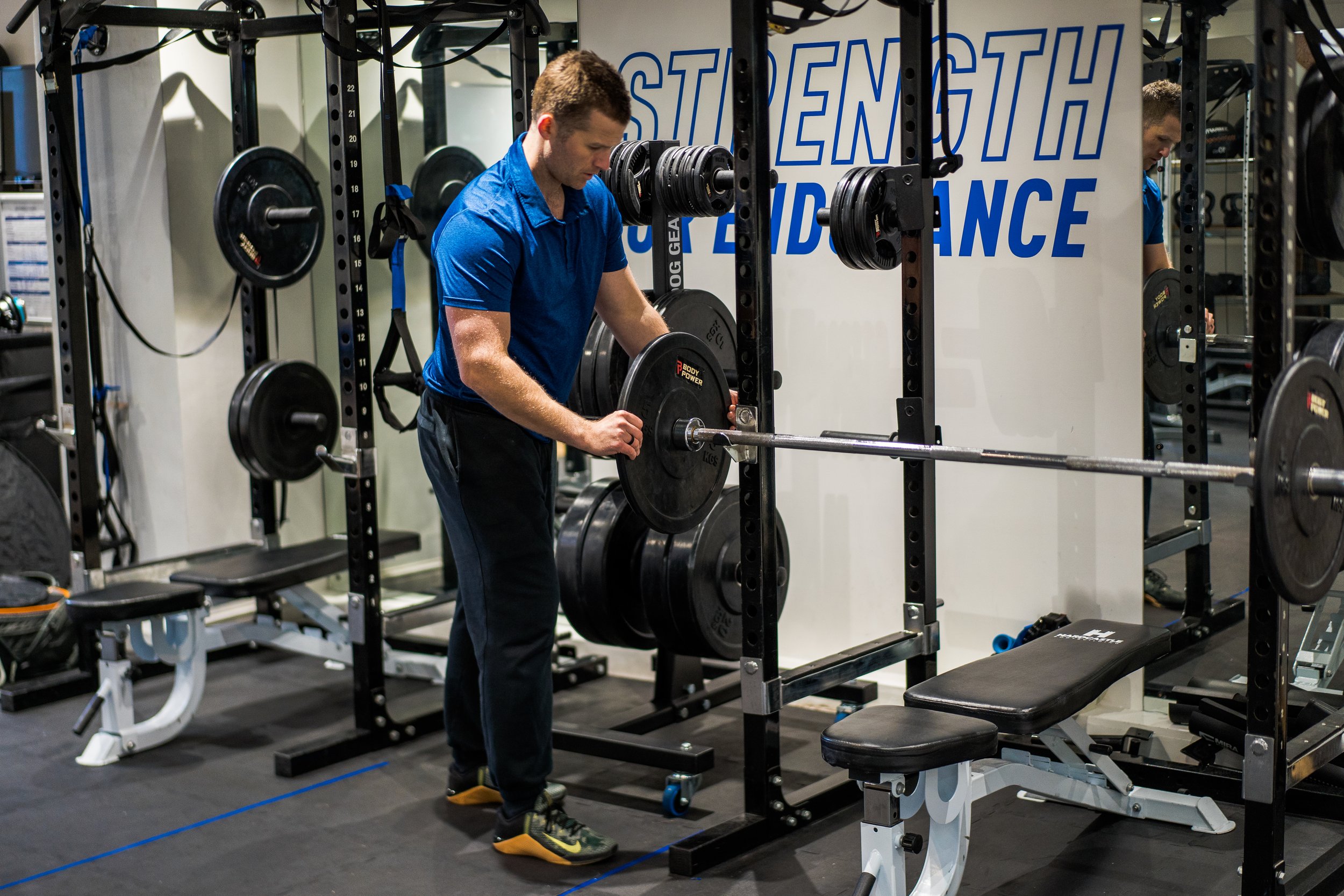ENDURANCE ATHLETES - CHOOSING THE CORRECT WEIGHT
Similar to how we use measurements such as FTP, heart rate and V02max to guide us through our swim, bike and run training it is also useful to have a threshold figure that can help monitor our strength sessions. Body weight exercises are great for familiarisation and activation, but with the enormous stresses endurance athletes put themselves through, once we are comfortable with the basics, progression is only going to occur by adding more load/weight.
When working with athletes face-to-face it’s possible to safely undergo a testing protocol that will give us an idea of their 1RM. 1RM or ‘one repetition maximum’ is the maximum amount of force that can be generated in one maximal contraction. This load is strictly for testing and rarely used as a training weight, especially with endurance athletes. Generally for the results this type of athlete is looking to achieve, proficient athletes work to a minimum of 3-5RM, which focuses in the Strength/ Power range.
Training Alone?
So what should you do if you don’t have someone to walk and talk you through the process?
First get familiar with how each movement or exercise feels without any added load
With exercises using a barbell start out with just the bar (usually 20kg itself) to get a feel of the base weight. From here you can gradually add load usually in 2.5kg-5kg increments. And don’t forget to use plate clips to secure the weight plates.
For exercises that require the use of dumbbells or kettlebells again start lighter than you think, generally 5kg is a good baseline, but this will vary from person to person.
Quickly you will be able to identify your capabilities. If you have lost all form, chances are you have gone too heavy, remember we want QUALITY here.
Athletes beginning a strength training program will likely be working with sets of 10-15 repetitions. This is a 'conditioning' range, used to initiate familiarity and neuromuscular recruitment. But as 'training-age' increases we will move on to programs such as 5 sets of 5 repetitions, which will then look to develop strength and power, correlating to around 85% effort.
Figure 2. Load-to-Repetition Relationship
From here we are able to work out our 1RM (or as close to as possible) e.g. If someone’s back squat 5RM is 60kg, using the chart above, we can see that this is approximately 85% of their 1RM, suggesting that their 1RM is 70kg. Using this type of training formula eliminates the need for frequent testing and allows the coach or athlete to train at significant intensities throughout the season (maintenance phase) without having the athlete to exert themselves maximally.
Because of the nature of endurance training and its highly repetitive training protocols, many endurance athletes believe that they should always perform high-repetition resistance training. What we must realise is that performing exercises at these intensities will only maintain the condition of the muscle and never reach a training stimulus required to elicit greater physiological adaptations. Improved performance occurs when we target and train the weak areas within an athlete via strength, power and explosiveness, generally done by increasing the load and decreasing the repetitions.
Your weights shouldn’t be set in stone, be conscious and allow for flexibility.
TIPS FOR CHOOSING THE CORRECT WEIGHT
Common sense, caution and maturity are essential
Swallow your pride and focus on quality over quantity. By starting light it is easy to increase the load, but start too heavy and you will increase the risk of injury.
When performing primary movements (e.g. Squat or Deadlift), start by practicing the movement with a broomstick or just the barbell/dumbbell for a set of 10 reps. Then perform at least 2 warm up sets (1 x 10 reps at 20-30% and 1 x 5 reps 50-60% of your working weight).



